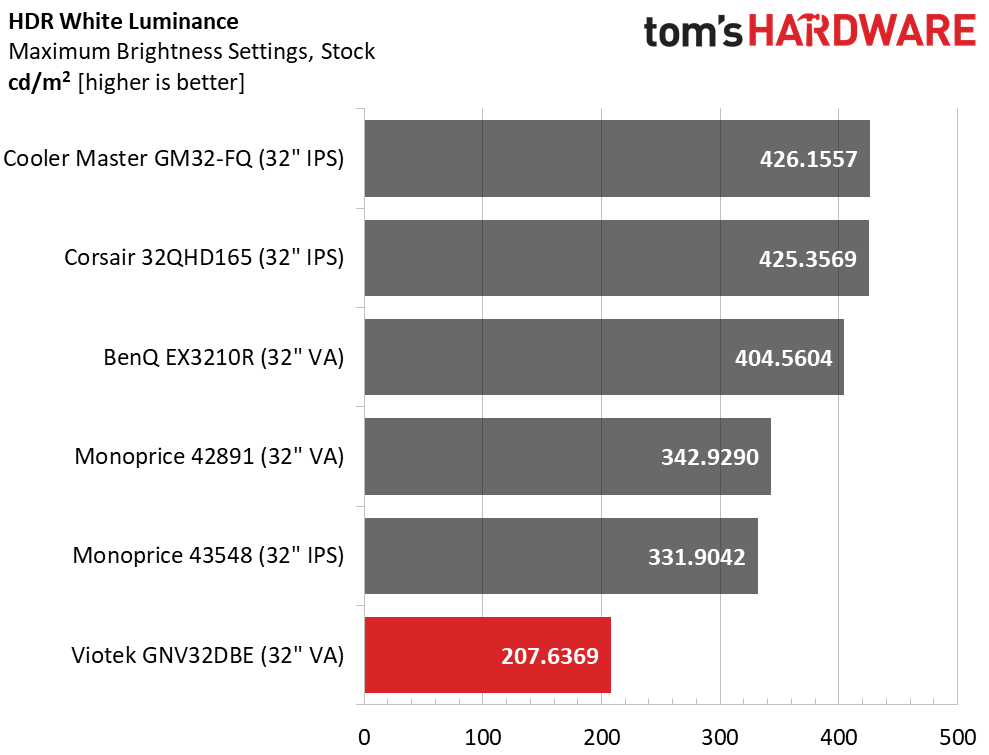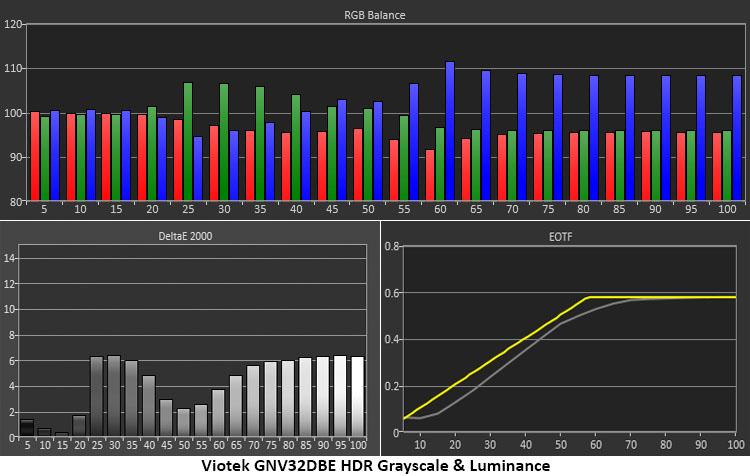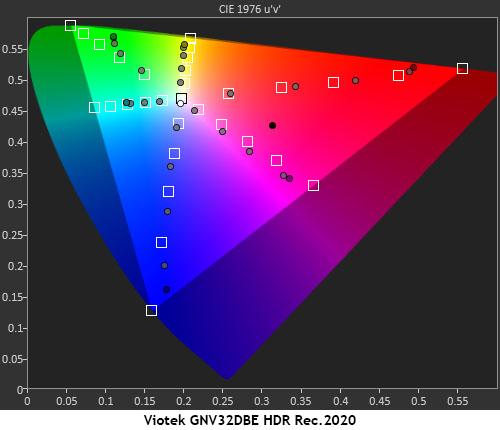Why you can trust Tom's Hardware
Our HDR benchmarking uses Portrait Displays’ Calman software. To learn about our HDR testing, see our breakdown of how we test PC monitors.
The GNV32DBE accepts HDR10 signals and switches modes without user intervention once you turn on the Auto Detect option in the OSD. Unfortunately, there’s no improvement in dynamic range.
HDR Brightness and Contrast



HDR brightness is quite low at just 207 nits. While this is about the same output level one would run for SDR content, HDR needs more overhead if it is to bring out bright highlights in the picture. And even though the GNV32DBE has the lowest black levels and highest HDR contrast of the group, its picture looks the same as SDR. With that in mind, it would be best to forgo the extra bandwidth needed for HDR and devote that processing to frame rates. There’s just no benefit to running HDR on this monitor.
Grayscale, EOTF and Color



The GNV32DBE’s grayscale errors are the same as what I recorded in SDR mode. Low and mid-tone steps are a bit green, while brighter parts of the image have a blue tint. The errors aren’t tremendous, and most content will look fine, but just fine, not impactful the way HDR should be. The EOTF curve tends to be dark up until the transition to tone mapping where it meets the reference line. In content, you can see shadow detail reasonably well, but you might have to adjust the in-game controls to make sure you can make everything out clearly, especially when the action gets more intense.
HDR color tracks on-hue with just slight over-saturation. This holds true for content mastered in either DCI-P3 or Rec.2020 which is a good thing. Though the HDR image doesn’t have any more dynamic range or pop than the SDR one, it is reasonably color accurate and is not missing any detail or shading.
Get Tom's Hardware's best news and in-depth reviews, straight to your inbox.

Christian Eberle is a Contributing Editor for Tom's Hardware US. He's a veteran reviewer of A/V equipment, specializing in monitors. Christian began his obsession with tech when he built his first PC in 1991, a 286 running DOS 3.0 at a blazing 12MHz. In 2006, he undertook training from the Imaging Science Foundation in video calibration and testing and thus started a passion for precise imaging that persists to this day. He is also a professional musician with a degree from the New England Conservatory as a classical bassoonist which he used to good effect as a performer with the West Point Army Band from 1987 to 2013. He enjoys watching movies and listening to high-end audio in his custom-built home theater and can be seen riding trails near his home on a race-ready ICE VTX recumbent trike. Christian enjoys the endless summer in Florida where he lives with his wife and Chihuahua and plays with orchestras around the state.